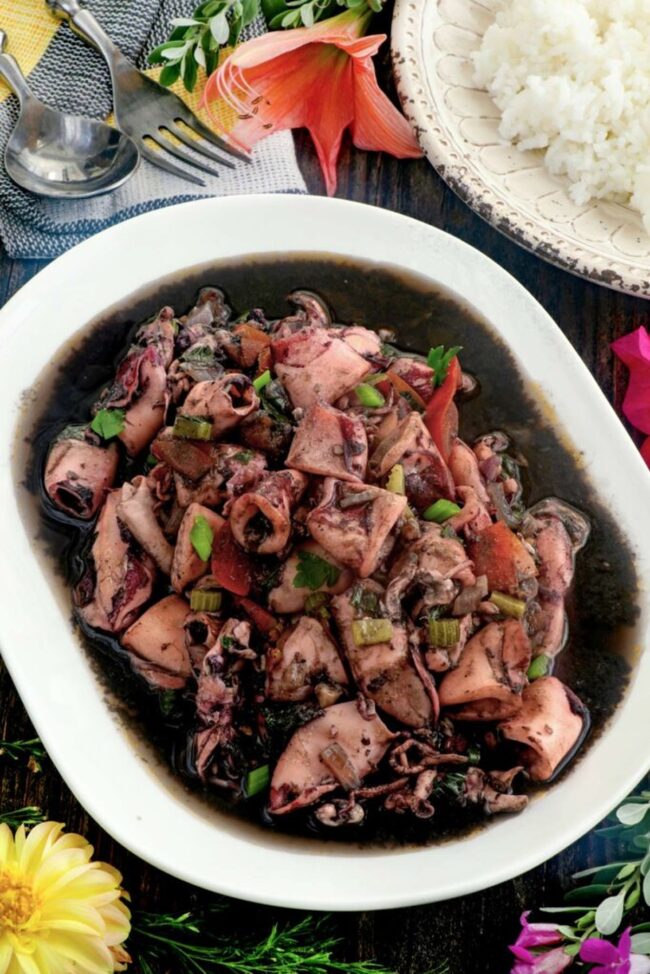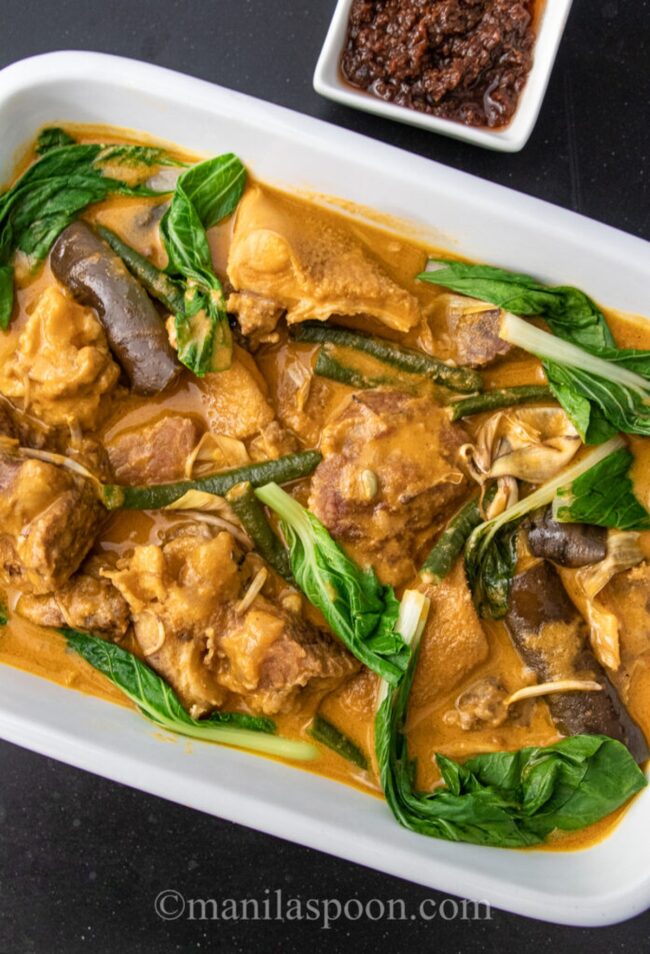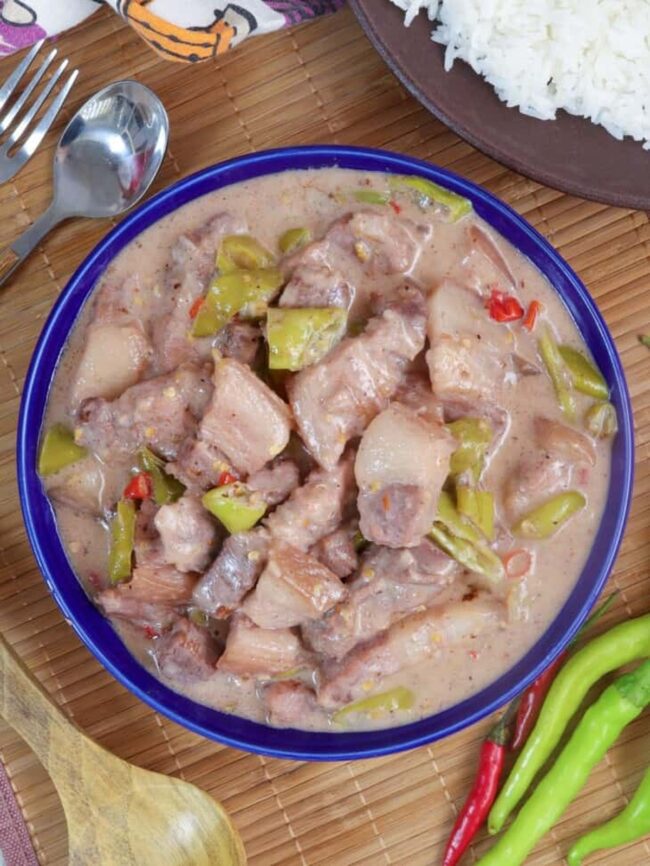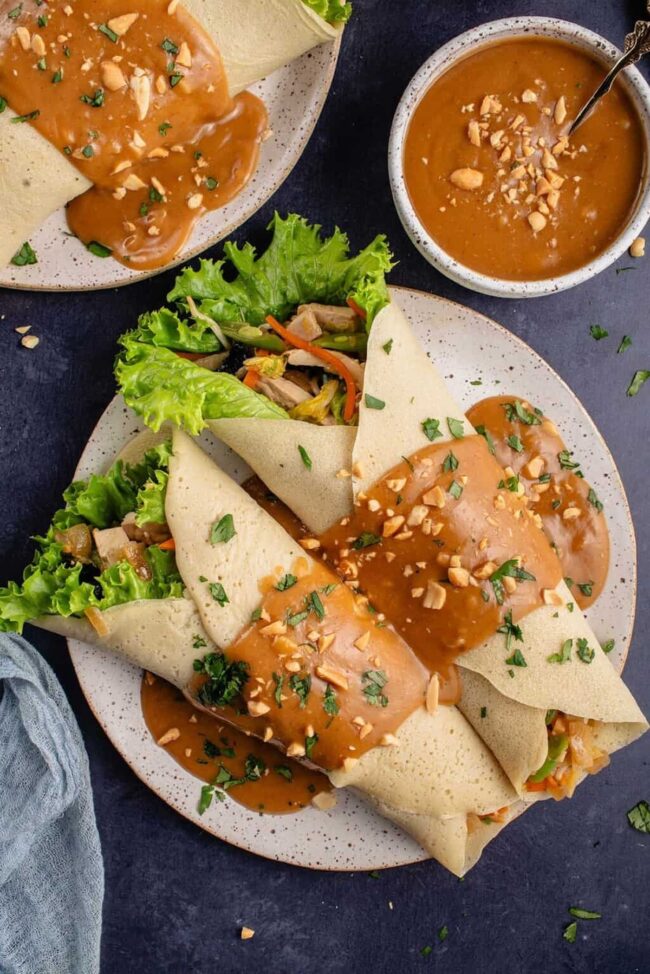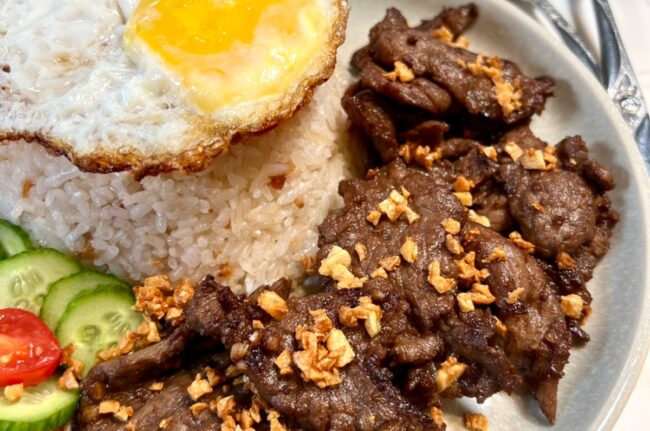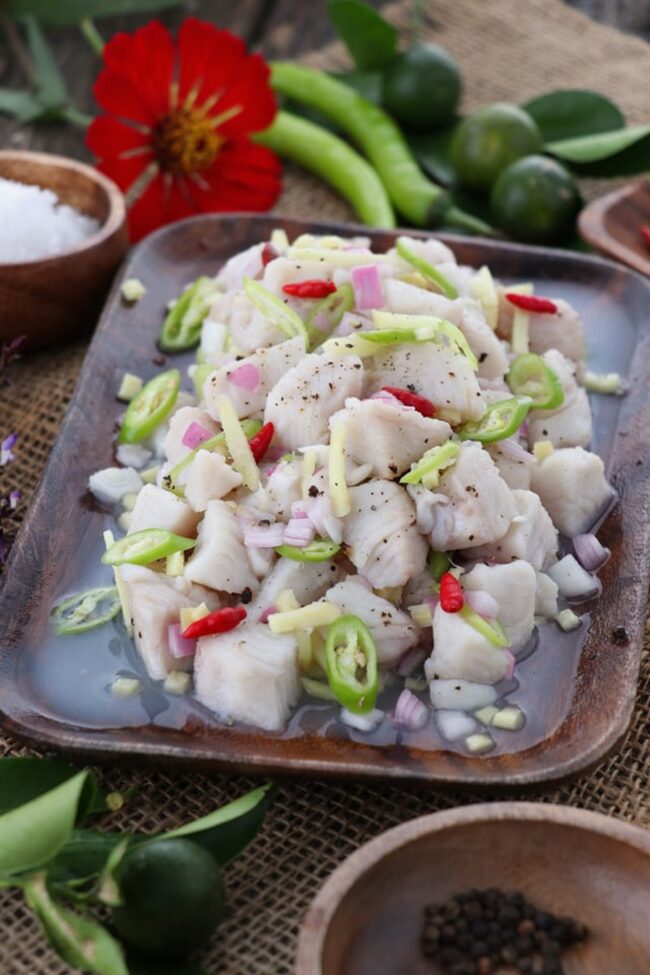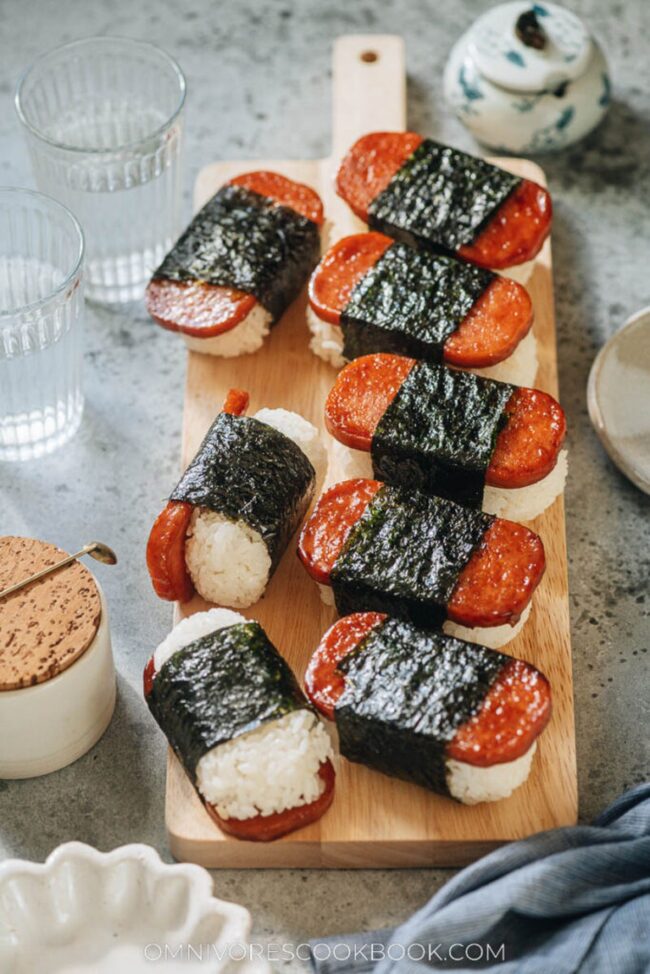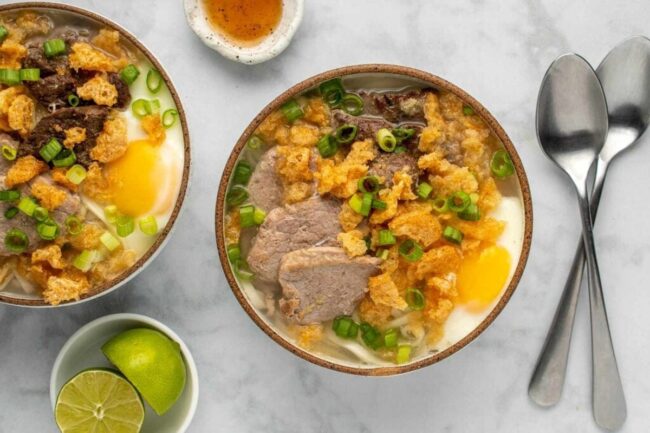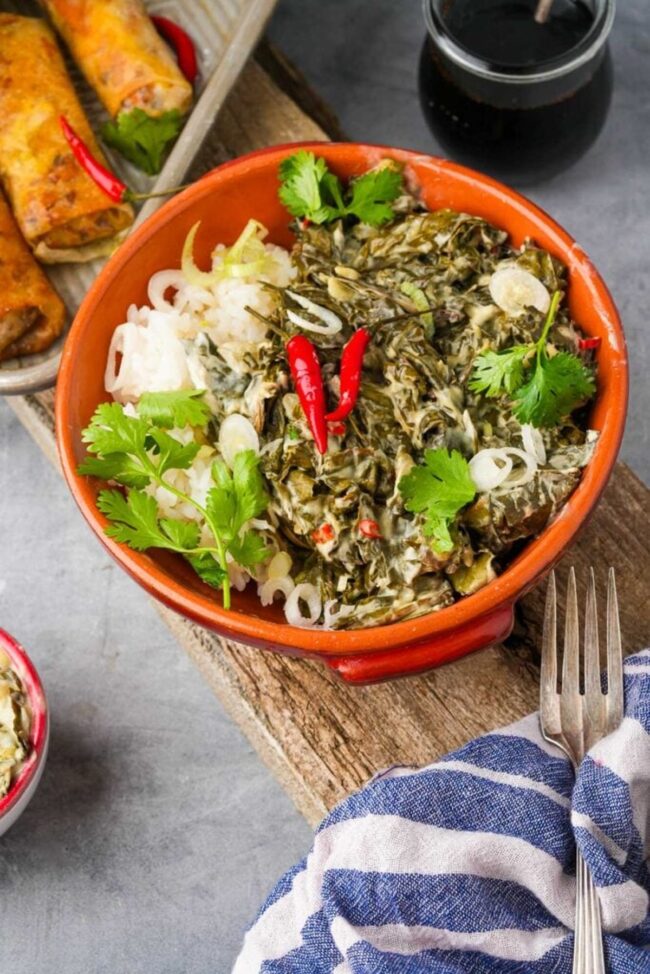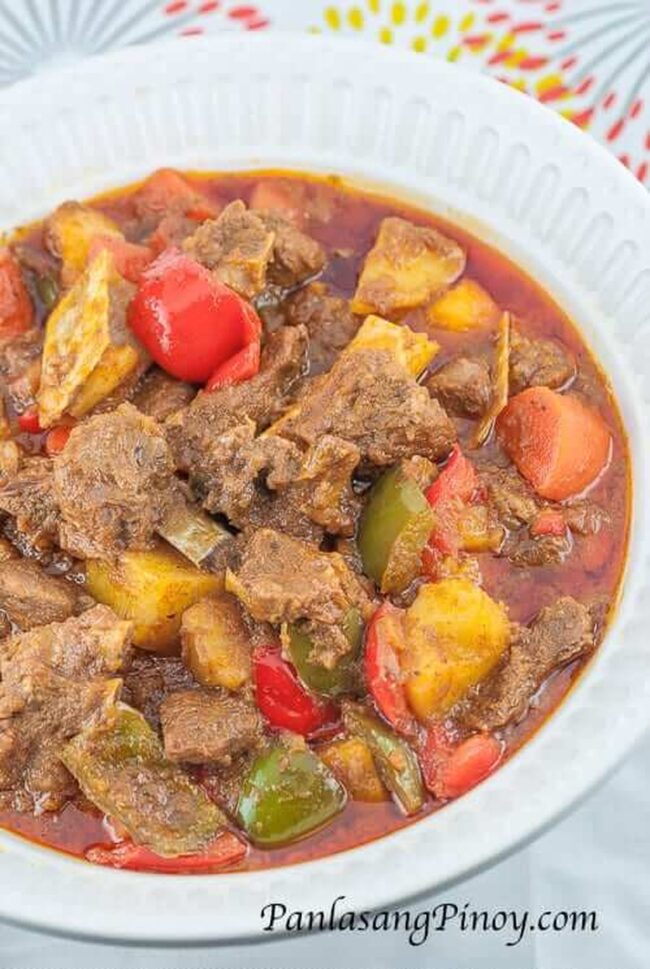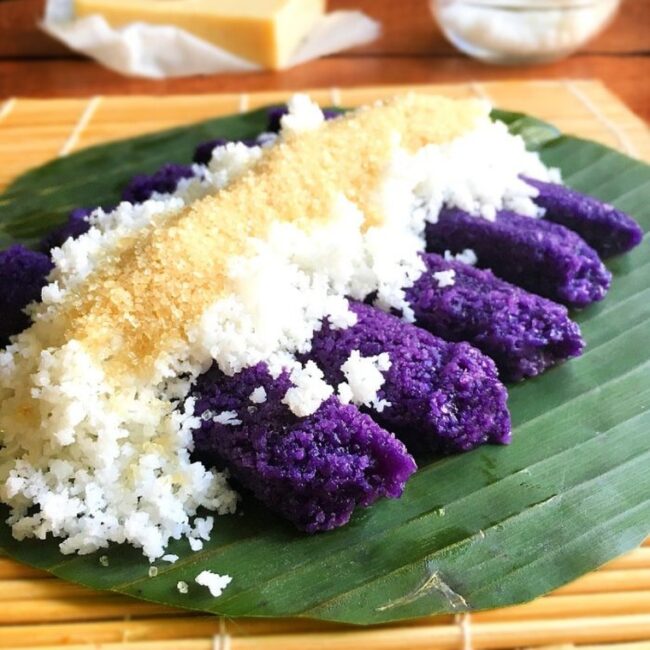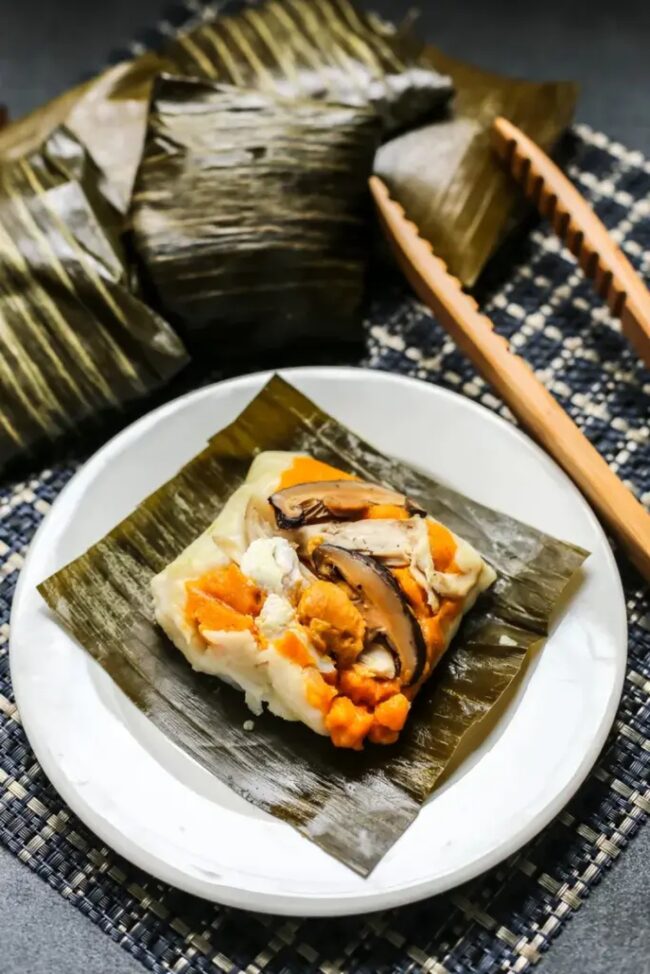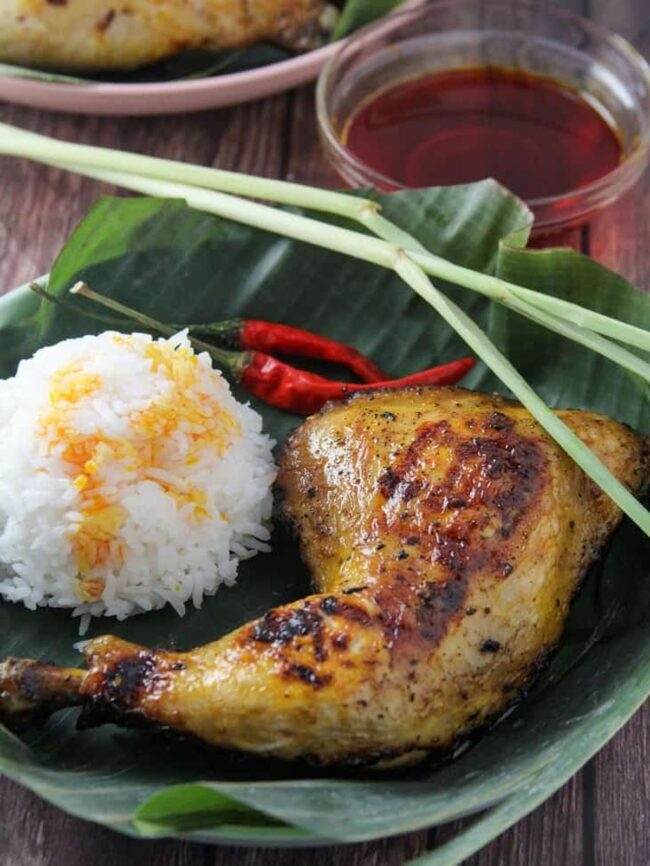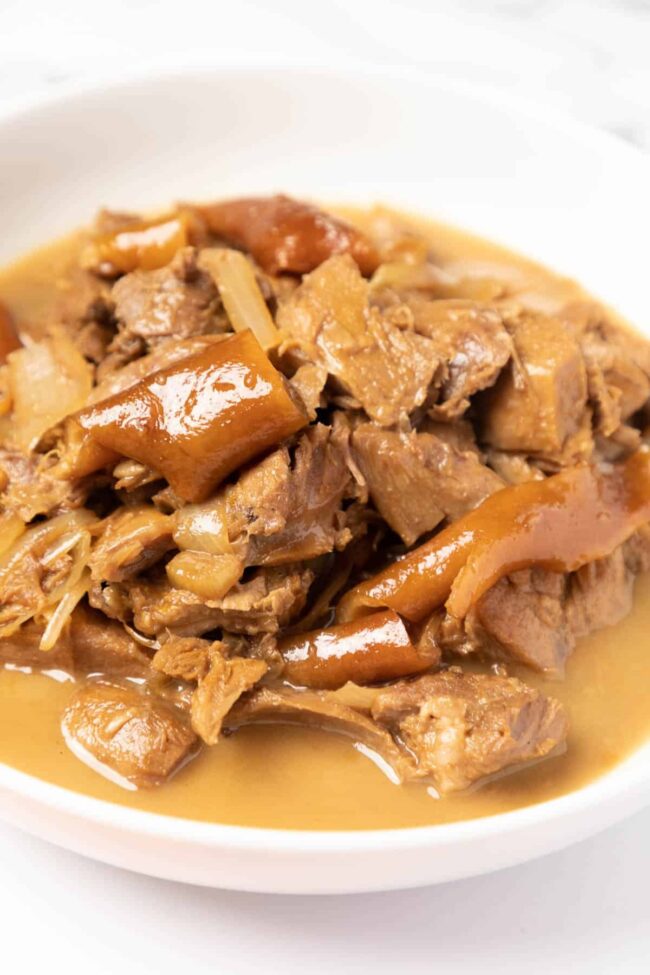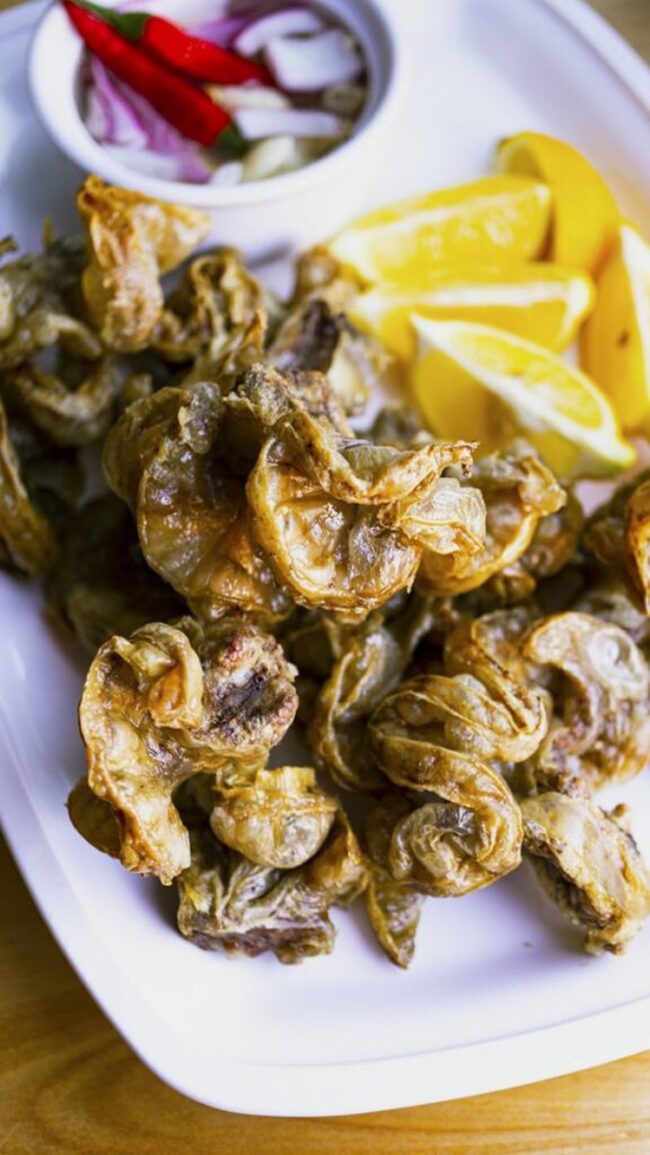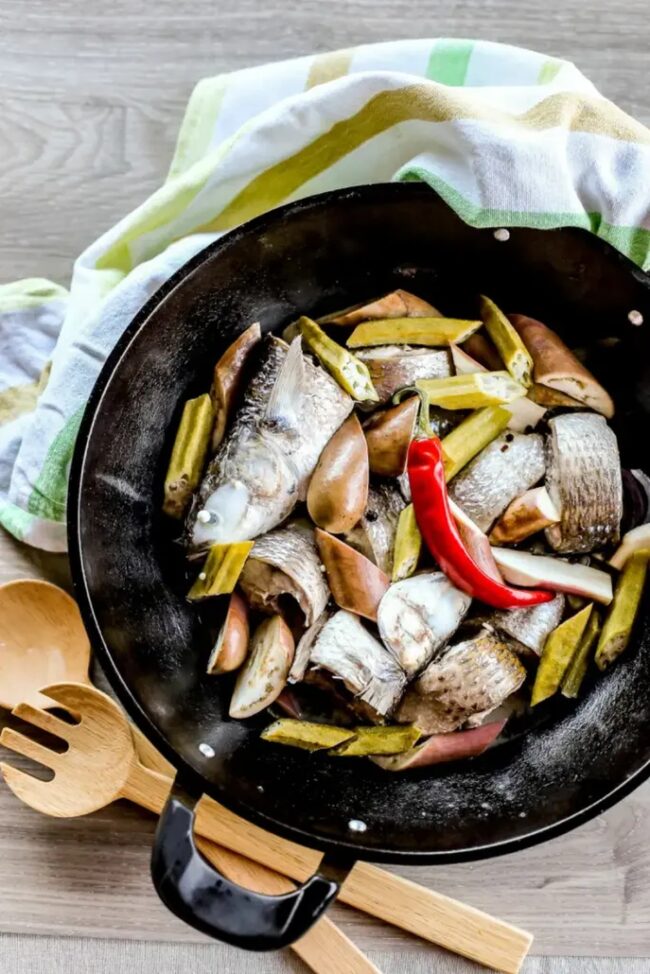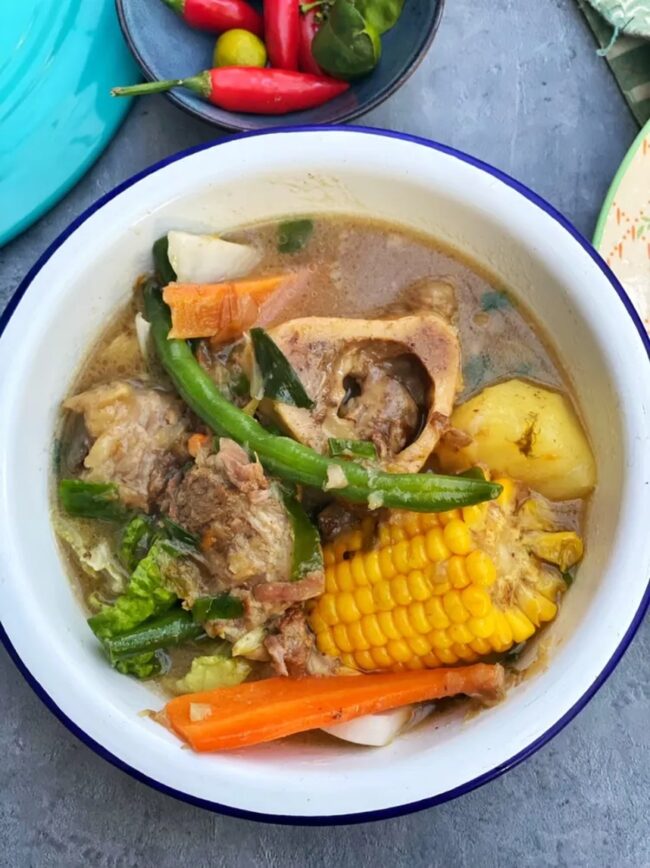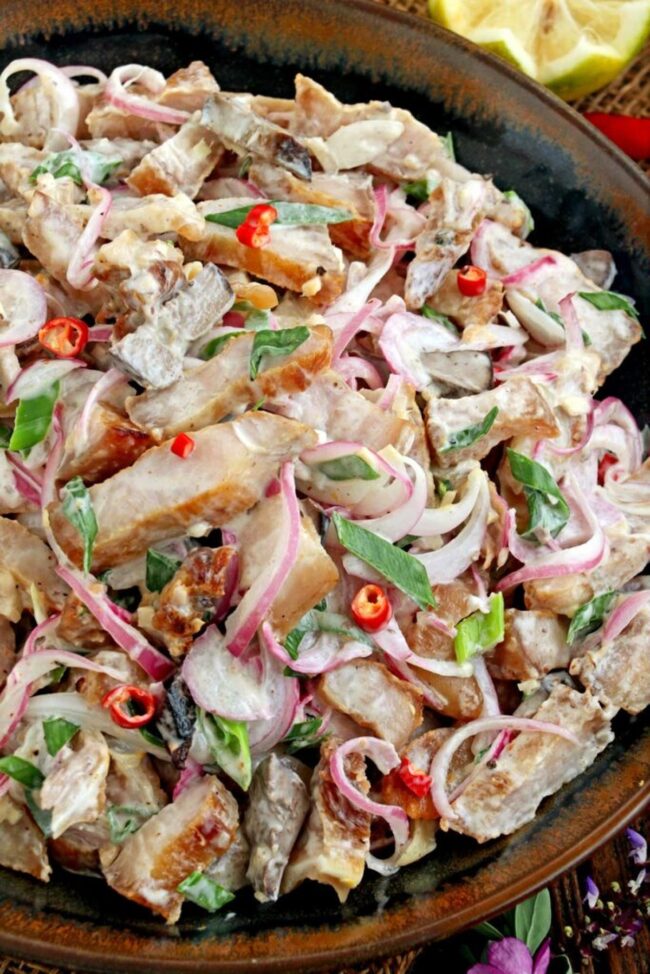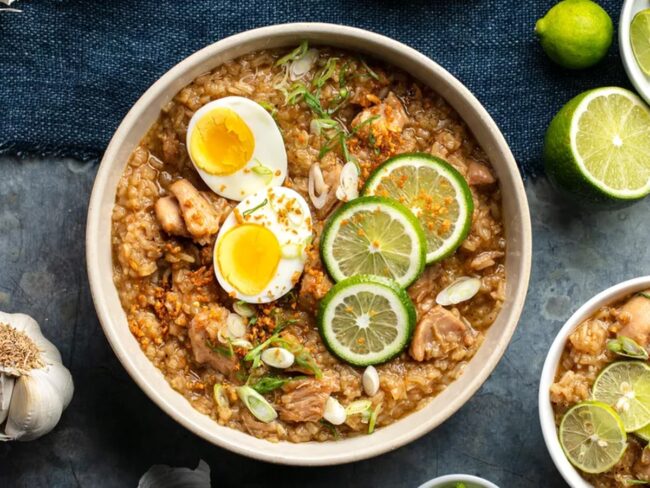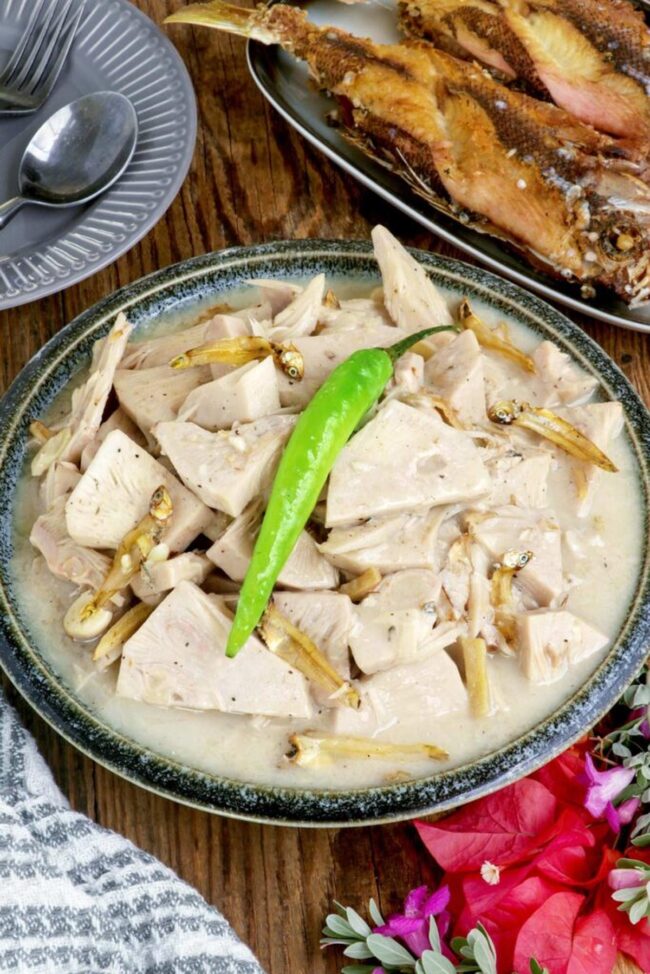30 Mouthwatering Filipino Recipes for Your Kitchen
Filipino recipes introduce bold and exotic flavors to your culinary repertoire.
From savory adobo to sweet halo-halo, these dishes offer a unique taste experience.
Fresh ingredients and rich sauces create memorable meals that stand out.
Each recipe reflects the vibrant culture and traditions of the Philippines.
Filipino Recipes Packed with Unique and Bold Flavors
Check out below recipes celebrate the diversity and richness of traditional dishes from the Philippines.
Adobong Pusit
A popular dish in Filipino cuisine, Adobong Pusit features tender squid cooked in a flavorful sauce.
The combination of soy sauce, vinegar, and water creates a tangy base.
Garlic and onions enhance the taste, while black pepper adds a delightful kick.
Quick cooking helps maintain the squid's tenderness; sautéing followed by just a few minutes of simmering works best.
Some enjoy adding squid ink for deeper color and flavor richness.
Steamed rice serves as an excellent partner to this savory dish that seafood lovers truly appreciate.
Kare-Kare
Rich and hearty, Kare-Kare is a beloved Filipino stew that showcases tender oxtail or beef tripe simmered in a creamy peanut sauce.
The unique flavor of the dish comes from ground peanuts, which create a deliciously nutty base.
Fresh vegetables like eggplant, string beans, and banana blossoms add both texture and nutrition to the mix.
A delightful contrast exists between the savory meat and slightly sweet sauce that makes each bite enjoyable.
For an added kick, serve it with bagoong (shrimp paste) on the side to enhance its taste further.
Preparing this comforting stew at home offers an authentic experience of Filipino cuisine paired perfectly with steamed rice for a satisfying meal.
Sinigang na Baboy
Sinigang na Baboy serves as a beloved Filipino sour soup that warms the heart.
This dish features tender pork belly, slow-cooked in a tangy broth made from tamarind, which gives it a distinct sour flavor.
Colorful vegetables like tomatoes, onions, and string beans provide both texture and nutrition to the meal.
The addition of fish sauce enhances its savory profile.
Enjoying this soup with steamed rice creates a satisfying experience on rainy days or whenever comfort is needed.
Every bowl brings warmth and satisfaction that comforts the soul after each sip.
Bicol Express
A perfect meal for spice lovers, Bicol Express features a creamy pork stew bursting with flavor.
Enjoy the rich combination of coconut milk and chili peppers that makes this dish truly special.
Cooking begins with sautéing garlic, onions, and ginger in oil until fragrant.
Next comes the pork, which needs to brown lightly before adding coconut milk along with shrimp paste for an extra kick of taste.
Spice enthusiasts can adjust chopped chili peppers according to their preference while letting everything simmer until tender and thickened.
Serve this delightful dish hot alongside steamed rice for a satisfying dining experience.
Pancit Palabok
Rich flavors define Pancit Palabok, a beloved Filipino noodle dish.
A base of rice noodles holds a delicious seafood sauce made from shrimp broth, thickened with cornstarch or flour for extra texture.
Toppings enhance the meal with cooked ground pork, succulent shrimp, and sliced hard-boiled eggs adding depth.
Crushed pork rinds sprinkle on top provide a satisfying crunch that complements every bite.
Preparation begins with soaking the noodles followed by cooking the sauce and prepping toppings before layering them all together for serving.
This dish captures the essence of Filipino cuisine in every flavorful mouthful.
Lumpiang Sariwa
Fresh Filipino spring rolls, known as Lumpiang Sariwa, provide a tasty experience.
A unique feature of this dish lies in its uncooked crepe-like wrappers instead of fried ones.
The filling combines stir-fried vegetables and proteins such as pork, shrimp, tofu, carrots, and green beans for added flavor and nutrition.
Making the wrapper requires a straightforward mix of eggs, flour, and water cooked until firm in a hot pan.
Wrapping the filling inside adds an enjoyable texture to each bite.
Tapa
Filipino breakfast often features tapa, which consists of thinly sliced beef.
Marinating the meat in soy sauce, garlic, and spices adds a savory-sweet taste that many people love.
Cooking involves frying the marinated beef until it turns crispy and caramelized.
Tapsilog highlights this dish when paired with garlic fried rice and a sunny-side-up egg.
Freshness comes from adding sliced tomatoes or cucumbers on the side, while a small bowl of vinegar dipping sauce enhances every bite.
Starting your day with this protein-rich meal makes mornings special.
Kinilaw na Tanigue
Fresh fish shines in Kinilaw na Tanigue, a zesty Filipino ceviche.
This appetizer bursts with tangy flavors that awaken the palate.
Start by cutting raw tanigue, or Spanish mackerel, into small cubes and marinating them in vinegar for about ten minutes before draining.
Next, blend the fish with calamansi juice, ginger, chili pepper, onion, salt and pepper; adding a pinch of sugar can enhance its taste balance.
Allowing the mixture to sit briefly lets the acid “cook” the fish just right.
Chicken Inasal
Bacolod City in the Philippines is home to Chicken Inasal, a beloved grilled dish known for its tangy and savory taste.
The preparation begins with marinating chicken pieces in vinegar, calamansi juice, garlic, ginger, and lemongrass.
This marinade infuses the meat with a unique flavor that sets it apart.
Grilling occurs over hot coals while basting the chicken with butter or margarine mixed with annatto oil to achieve its eye-catching orange hue.
The final result features juicy meat paired beautifully with a slightly charred outer layer.
For an authentic Filipino meal, serve this dish alongside rice and a zesty dipping sauce made from vinegar, soy sauce, and chili peppers.
Spam Musubi
A tasty treat enjoyed in Hawaii, spam musubi has Filipino roots.
This snack features layers of rice, spam, and nori seaweed.
Cooking slices of spam until they become crispy adds a delightful texture.
Mixing soy sauce with sugar creates a flavorful glaze for the meat during cooking.
Pressing rice into a mold helps shape it before placing the cooked spam on top.
Wrapping everything in nori seals the ingredients together; moistening one end keeps it secure while adding options like garlic fried rice enhances its taste further.
Pandesal
Fresh and warm pandesal delights many throughout the day.
Soft, fluffy, and slightly sweet, this Filipino bread roll holds a special place in local hearts.
Bakeries across the Philippines proudly display these golden-brown treats.
The preparation involves mixing flour, yeast, sugar, salt, and milk to create a smooth dough.
After kneading and letting it rise, small balls take shape before being rolled in breadcrumbs for that unique texture.
Enjoying pandesal with butter or cheese enhances its flavor even more during breakfast or any other meal time.
Inihaw na Liempo
Inihaw na Liempo showcases delicious grilled pork belly that is popular at gatherings and special events.
Juicy meat paired with crispy skin creates an unforgettable experience.
A marination of soy sauce, citrus juice, garlic, and spices infuses the pork with a delightful sweet and savory flavor.
Achieving a perfect char is simple; grilling or baking works wonderfully for this dish.
Serving Inihaw na Liempo alongside rice and dipping sauce elevates it to a true Filipino feast.
Enjoying this meal brings people together around the table in celebration of rich culinary traditions.
Pinakbet
A hearty dish that highlights the rich variety of Filipino produce, pinakbet is especially loved in the Ilocos region.
This vibrant vegetable medley features fresh ingredients like bitter melon, eggplant, okra, and string beans.
Sautéed garlic, onions, and tomatoes serve as a flavorful base before adding cubed pork for a savory touch.
Mixing in shrimp paste enhances the umami flavor that makes this dish truly special.
Simmering everything together creates tender yet crisp vegetables that please the palate beautifully.
Serving pinakbet with steamed rice offers a satisfying main course packed with nutrition and taste.
Batchoy
Originating from Iloilo City, batchoy is a delicious Filipino noodle soup.
Two popular versions are La Paz batchoy and batchoy Tagalog.
La Paz features pork organs, crushed pork cracklings, and chicken stock for depth of flavor.
In contrast, Tagalog often includes pork blood along with misua noodles for a unique twist.
Preparing this dish at home starts with simmering pork and beef bones to create an aromatic broth.
Garlic, onions, and ginger enhance the taste beautifully.
After cooking the noodles separately, combine them in your bowl with the hot soup.
Adding sliced pork or liver along with crushed chicharron creates a delightful meal that warms both body and soul.
Laing
Laing offers a creamy experience with its taro leaves and coconut milk.
The dish features a rich flavor combined with a delightful texture that is hard to forget.
Begin by simmering coconut milk along with pork, shrimp paste, ginger, onion, and garlic for an aromatic base.
Dried taro leaves come next; adding them without stirring at first allows the leaves to soak in the coconut goodness for optimal texture.
A touch of chili peppers introduces just the right amount of heat.
Once everything simmers together until tender, enjoy this savory delight alongside rice for a satisfying meal.
Kalderetang Kambing
A satisfying meal awaits with Kalderetang Kambing, a flavorful goat stew from the Philippines.
Tender meat shines through this dish, enhanced by a mix of rich flavors.
Marination in calamansi juice, salt, and pepper sets the stage for cooking.
Garlic, onions, and tomatoes sautéed in oil create an aromatic base before adding the marinated goat meat until it turns golden brown.
Tomato sauce and water are then poured in to simmer for one to two hours until everything is soft and delicious; potatoes, carrots, and bell peppers add freshness at the end.
For those who enjoy spice, crushed chili can bring an extra kick that elevates each bite when served hot alongside steamed rice.
Puto Bumbong
Puto bumbong, a beloved Filipino dessert, shines with its vibrant purple hue.
Often enjoyed during the Christmas season, this dish captures the spirit of festive gatherings.
Preparation begins by soaking glutinous rice for two days before grinding it into a fine texture.
The rice combines with coconut milk powder and violet food coloring to create a delightful dough shaped into thin tubes using foil or banana leaves.
After steaming for about 20 minutes, these treats emerge hot and ready to serve with butter, grated coconut, brown sugar on top, and sometimes even cheese for added flavor.
Tamales Pampanga
Tamales Pampanga, often called bobotu, offers a delightful experience of Filipino cuisine.
This dish features rice flour, coconut milk, and peanut butter as its creamy base.
Shredded chicken, salted egg, and garlic sit atop the tamales for added protein and rich flavors.
Wrapped in banana leaves and steamed to perfection ensures they remain moist while gaining a hint of leafy fragrance.
Preparing Tamales Pampanga at home provides a satisfying treat that works well for breakfast or as a snack anytime you crave something delicious.
Inasal na Paa ng Manok
Grilled chicken feet, known as Inasal na Paa ng Manok, make a flavorful Filipino dish.
Marinating the chicken feet in vinegar, calamansi juice, garlic, and spices enhances their taste before grilling.
Once cooked to a crispy golden brown on the grill, a mixture of margarine, annatto oil, and lemon juice adds an extra burst of flavor.
Often enjoyed as an appetizer or snack option at gatherings or street food stalls throughout the Philippines' Visayas region and beyond.
This dish pairs nicely with rice alongside a refreshing drink for those seeking something unique to try.
Paksiw na Lechon
Leftover roast pork can become a delightful new dish called Paksiw na Lechon.
This Filipino recipe brings together chopped pork, vinegar, garlic, and spices to create a sweet and tangy stew bursting with flavor.
Adding lechon sauce enhances the richness of the meal, while onions, peppercorns, and bay leaves deepen its taste profile.
Serving this savory stew over rice makes for a satisfying dinner option.
Enjoying leftover roast pork in such a creative way ensures no part goes to waste while offering an exciting culinary experience.
Chicharron Bulaklak
Chicharrón Bulaklak serves as a popular snack in the Philippines, especially at bars and social gatherings.
This crunchy delight comes from deep-fried pork intestines that puff up during cooking, resembling flowers.
The preparation begins with cleaning the intestines thoroughly before boiling them with salt, peppercorns, and garlic for flavor.
After boiling, cutting them into smaller pieces is essential for frying until they turn golden brown and crispy.
A spicy vinegar dip often accompanies this dish; its tanginess complements the crunchy texture perfectly.
Maja Blanca
Maja Blanca delights with its creamy texture, making it a favorite in Filipino cuisine.
This dessert combines coconut milk, cornstarch, and sugar to create a smooth pudding-like treat.
Simple ingredients ensure that anyone can whip it up at home without hassle.
Adding corn kernels enhances both the flavor and texture for those who wish to experiment with their recipes.
Cutting the Maja Blanca into squares or diamonds makes for an appealing presentation, especially when topped with latik, crunchy toasted coconut curds that add authenticity.
Perfect for special celebrations or as an afternoon snack, this sweet dish truly satisfies cravings for something deliciously unique.
Halo-Halo
A tall glass filled with colorful ingredients makes Halo-Halo a delight on warm days.
Sweet beans, jellies, fruits, and ube halaya create a vibrant mix that is visually appealing and tasty.
Shaved ice adds a cool touch when layered generously over these toppings.
Pouring evaporated milk enhances the flavors further, while a scoop of ice cream and slice of leche flan provide an indulgent finish.
The term "Halo-Halo" translates to “mix-mix” in Filipino, capturing the essence of this dessert as it invites everyone to blend all its elements together before savoring each spoonful.
Inun-unan
Inun-unan offers a tangy flavor that many people enjoy, especially in the Visayas region of the Philippines.
This dish features fish marinated in vinegar, garlic, ginger, and spices before cooking it all together until the liquid thickens.
The vinegar not only adds a unique taste but also helps to preserve the fish for longer periods.
Milkfish is commonly used; however, various types can work well too.
Often paired with steamed rice, this dish suits busy families or those looking for easy meals to take on-the-go.
Its blend of sour and savory flavors makes it truly memorable among Filipino cuisine.
Bulalo
A rich and comforting soup, bulalo serves as a perfect dish for chilly weather.
Tender beef shanks and marrow bones create a flavorful broth that warms the soul.
Fresh vegetables such as corn, cabbage, and potatoes enhance the meal’s heartiness.
Cooking involves simmering these ingredients with ginger and peppercorns until the meat falls apart easily.
Many people in the Philippines love this filling meal, often pairing it with steamed rice or crusty bread to enjoy every drop of that delicious broth.
This hearty Filipino beef soup offers warmth on cold days like no other dish can.
Kwek Kwek
Kwek Kwek is a delightful street food featuring quail eggs.
Crunchy on the outside and creamy within, this snack captures attention at parties or as a quick bite.
Boiling and peeling quail eggs marks the beginning of its creation.
A vibrant orange batter made from flour, water, and food coloring coats each egg before deep-frying transforms them into golden morsels.
Serving these treats with a sweet-spicy dipping sauce elevates their flavor; simply mix vinegar, ketchup, sugar, and soy sauce for an exciting twist.
Dinikdikan
Dinikdikan serves as a flavorful appetizer or main dish, often enjoyed alongside rice.
This popular Filipino delicacy hails from the Ilocos region and features grilled pig parts such as ears, face, and liver.
Tender meat undergoes boiling before grilling to achieve a delightful smoky taste.
Some variations introduce deep-frying for added crunchiness.
A vibrant mix of onions and chili peppers brings freshness to the dish, while ginger, garlic, vinegar, salt, and pepper enhance its savory profile.
Taho
Warm silken tofu serves as the base for taho, a cherished Filipino dessert.
Tofu should be heated by steaming or microwaving it for a short time.
Tapioca pearls add texture and are easy to prepare in about five minutes following package instructions.
A sweet syrup made from brown sugar, water, and vanilla simmers until it thickens nicely.
When ready to serve, combine the warm tofu with tapioca pearls and drizzle on the syrup for that perfect finish.
Arroz Caldo
Arroz caldo offers comfort, especially on chilly days or when feeling unwell.
Sautéing garlic, onion, and ginger in oil starts the cooking process.
Chicken pieces get added next and cooked until slightly browned for a rich taste.
Uncooked rice combines with fish sauce before chicken broth is poured in to create a hearty base.
Simmering this mixture for 30-40 minutes allows the rice to become tender and creamy; adding more broth ensures the right consistency.
Final touches include seasoning with salt, pepper, and a splash of lime or calamansi juice along with scallions and crispy fried garlic on top for added crunch.
Langka at Gata
Serving Langka at Gata over rice highlights the tropical flavor of unripe jackfruit in a rich, creamy sauce.
The dish features tender slices of jackfruit simmered with coconut milk, creating a delightful texture.
Garlic, onions, and ginger enhance its taste beautifully.
For those who enjoy added protein, recipes often include pork or dried fish.
Adjusting seasoning with salt and pepper gives it that final touch; chili peppers can add an exciting kick if desired.
Filipino Cuisine Common Parts
Filipino cuisine features a mix of flavors, textures, and cooking techniques. Its diverse components make every dish rich in culture and tradition.
Exotic Fruits & Veggies
Filipino cooking highlights a variety of fresh ingredients that enhance flavor and texture.
Coconut shines brightly, appearing as milk, cream, or grated flesh in countless dishes.
Green mangoes contribute a tangy zest to salads and sides while bamboo shoots add a delightful crunch to meals.
Root vegetables like sweet potatoes, cassava, and purple yam often take the place of rice in both savory and sweet recipes.
Taro leaves and water spinach enrich soups with their satisfying texture alongside popular vegetables such as eggplant, okra, and bitter melon used widely in traditional preparations.
Using banana leaves for wrapping food not only adds flavor but also offers an appealing presentation on the table.
Unique Spice Blends
Key ingredients in Filipino cooking include garlic, ginger, and onions, which create rich base flavors.
Vinegar plays a significant role as both a cooking agent and condiment.
Soy sauce and fish sauce introduce saltiness that enhances many meals.
Calamansi contributes a zesty kick to marinades and dipping sauces while its juice serves as an excellent substitute for lemon or lime.
Desserts and drinks gain a sweet aroma from pandan leaves, adding depth to the flavor profile of various dishes.
Bagoong offers intense umami notes; this fermented shrimp or fish paste is used sparingly to elevate sauces and stews with its bold taste.
Traditional Filipino Cooking Methods
Traditional Filipino cooking relies on time-honored methods that enhance flavor and texture. These techniques reflect the country’s culinary heritage.
Grilling & Roasting Tips
A love for grilled food runs deep in Filipino culture.
Big events often feature lechon, a whole roasted pig that is crispy on the outside and juicy within.
Smaller cuts like liempo, or pork belly, also grace many tables as popular grilled choices.
Fish wrapped in banana leaves before grilling stays moist and gains extra flavor from the leaves.
Chicken inasal shines with its marinade of vinegar, lemongrass, and spices that create a memorable taste experience.
Roasting takes place in ovens as well; families enjoy chicken stuffed with lemongrass alongside delicious roasted vegetables for side dishes.
Best Stew & Soup Recipes
Filipino meals often feature hearty stews that bring warmth and comfort to the table.
A large pot bubbling on the stove usually signals a delicious dish in progress.
One of the most beloved options is Adobo, where chicken or pork simmers with vinegar, soy sauce, and garlic for a tangy flavor.
Sinigang stands out as a sour soup made with pork, fish, or shrimp; tamarind adds its distinctive tartness while okra and taro root enhance its texture.
Another comforting choice is Tinola, which combines chicken with ginger and includes green papaya along with chili leaves.
Stews like these showcase the rich culinary heritage of Filipino cuisine through their unique flavors and ingredients.

